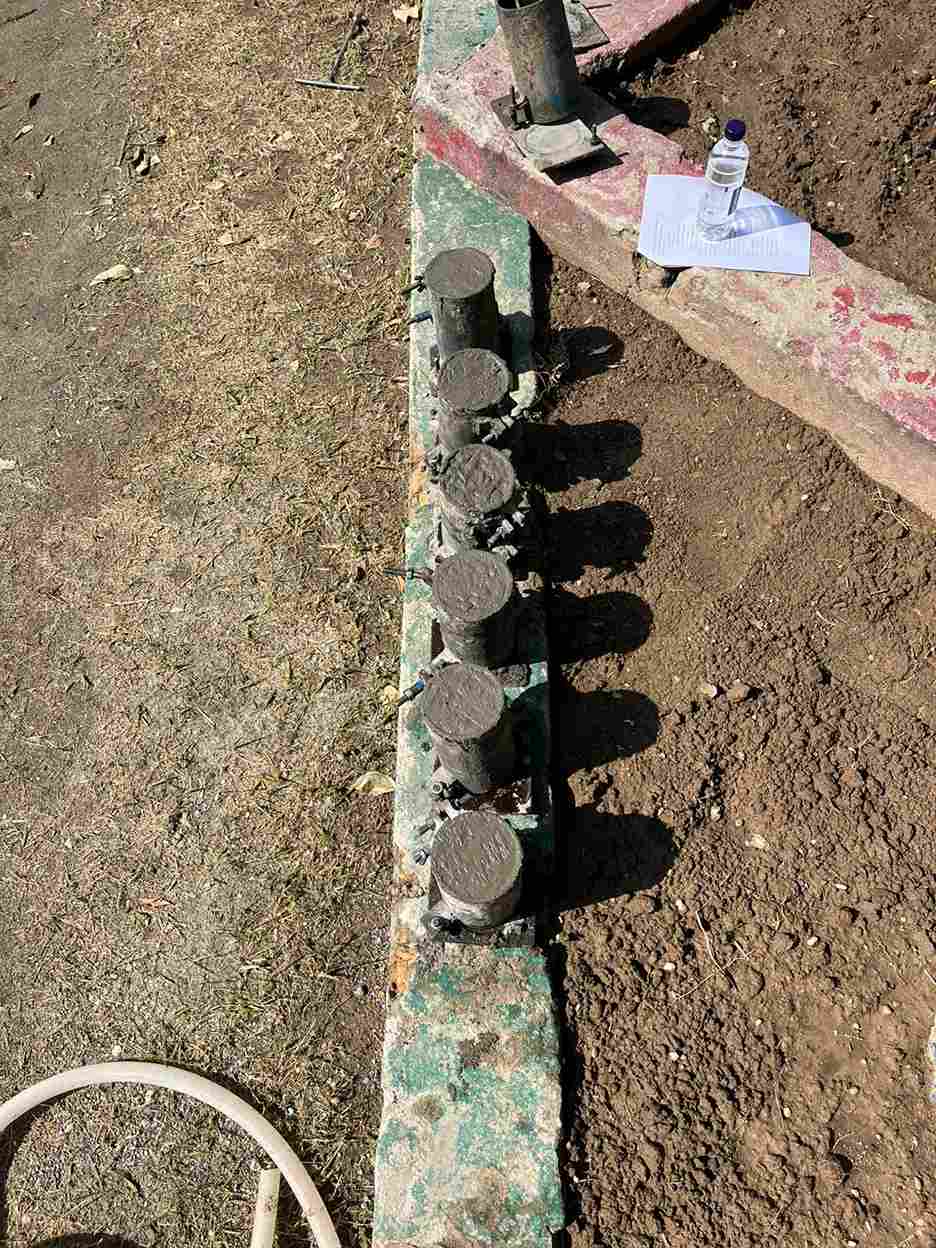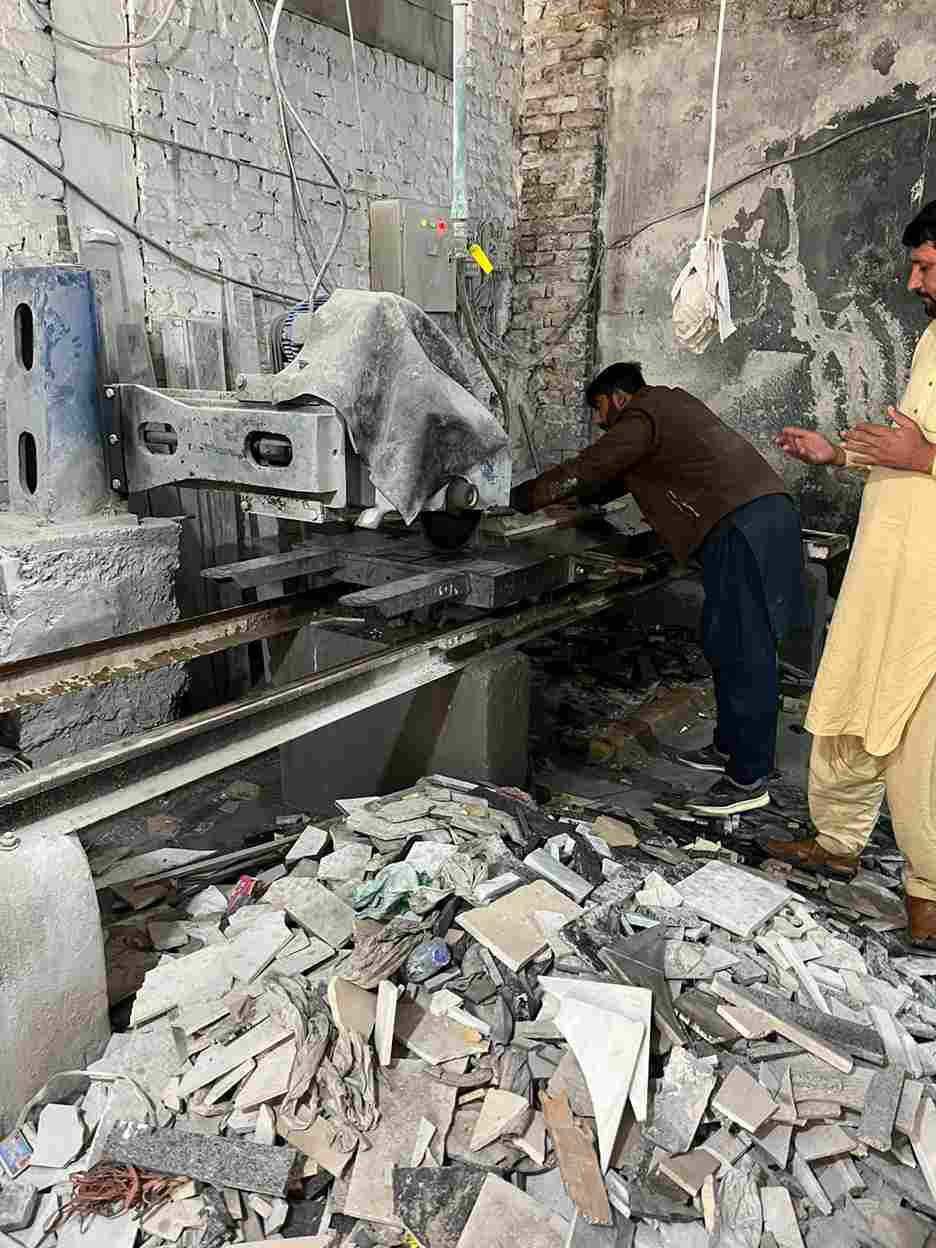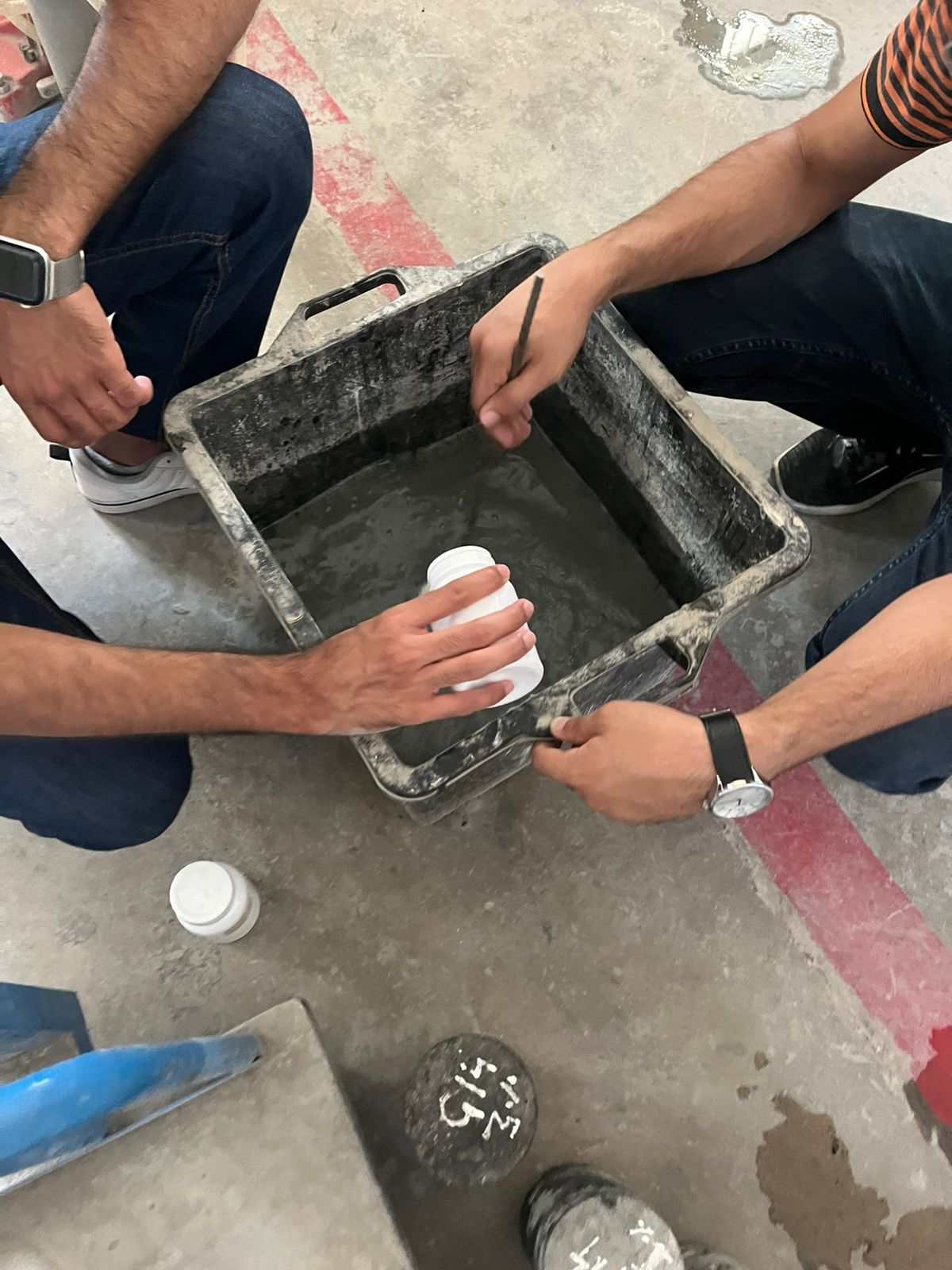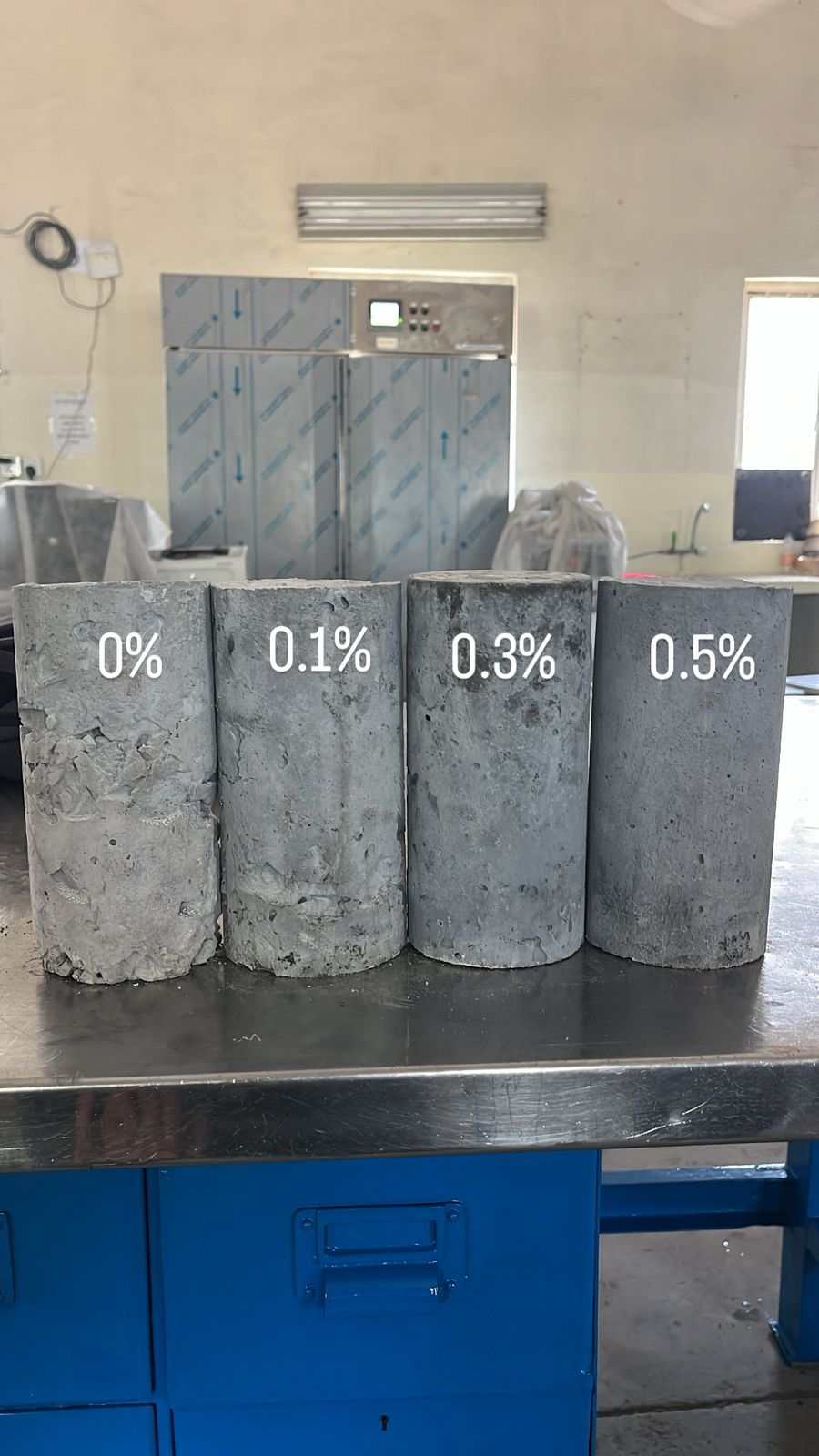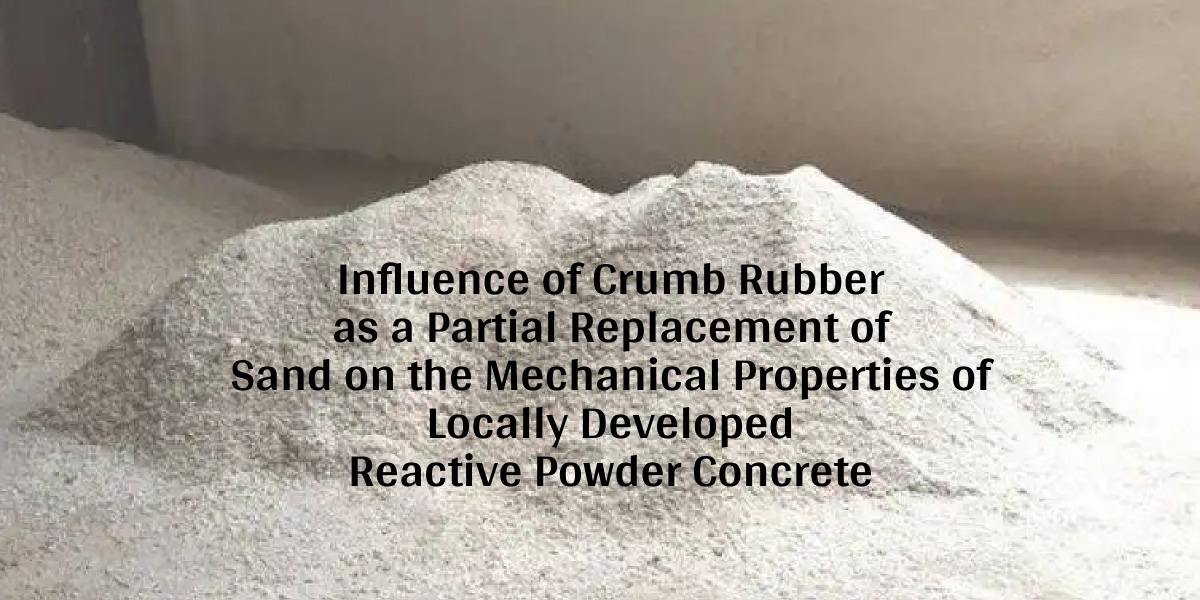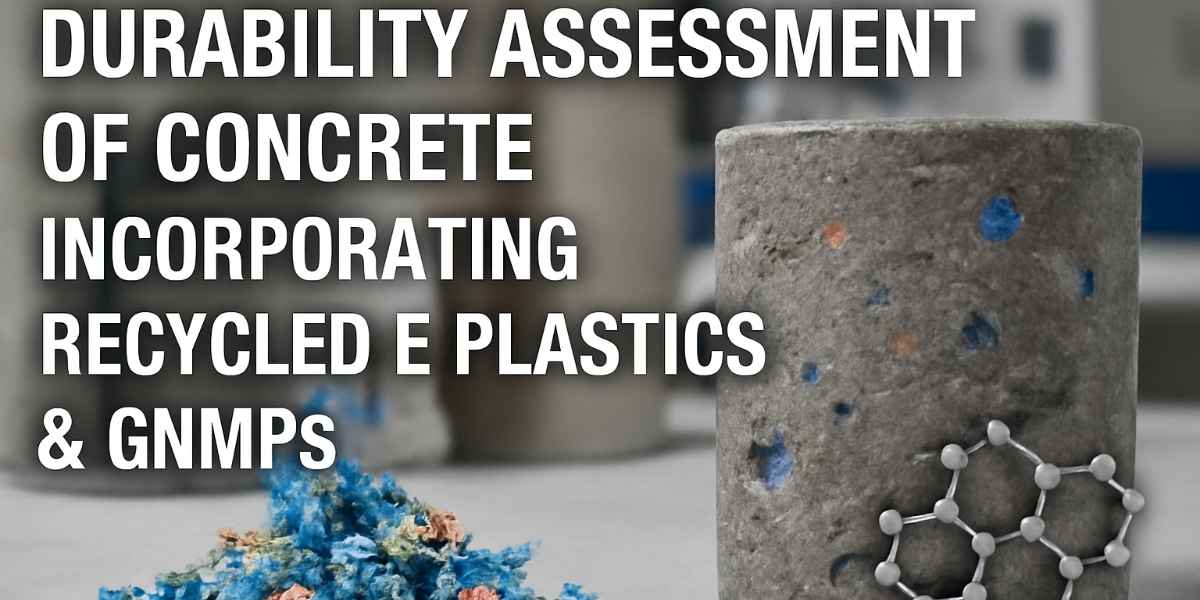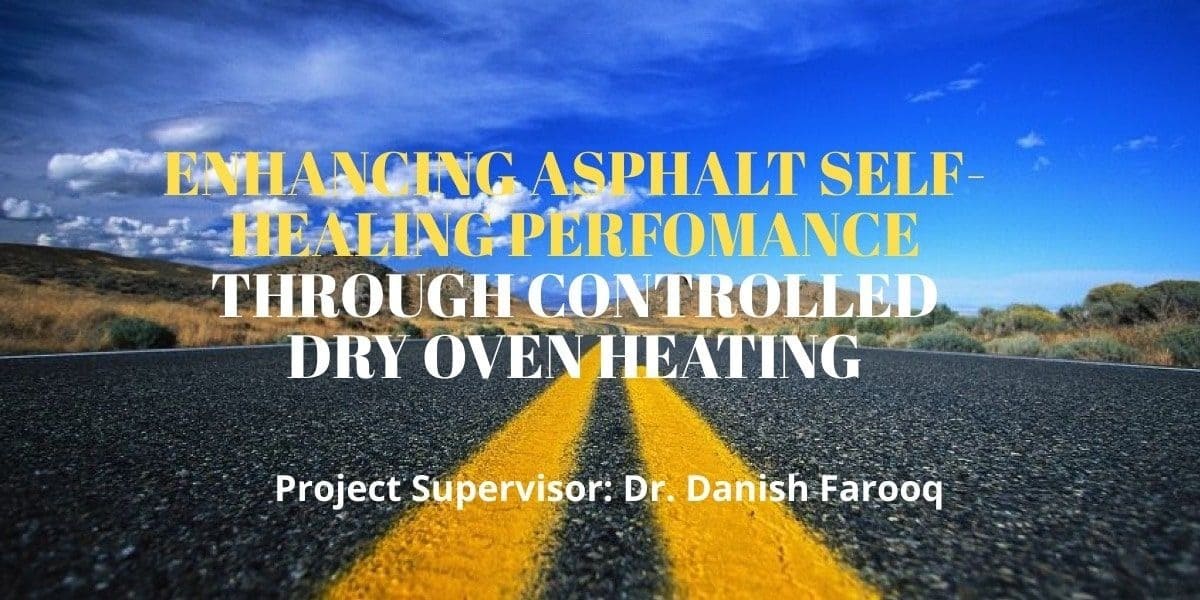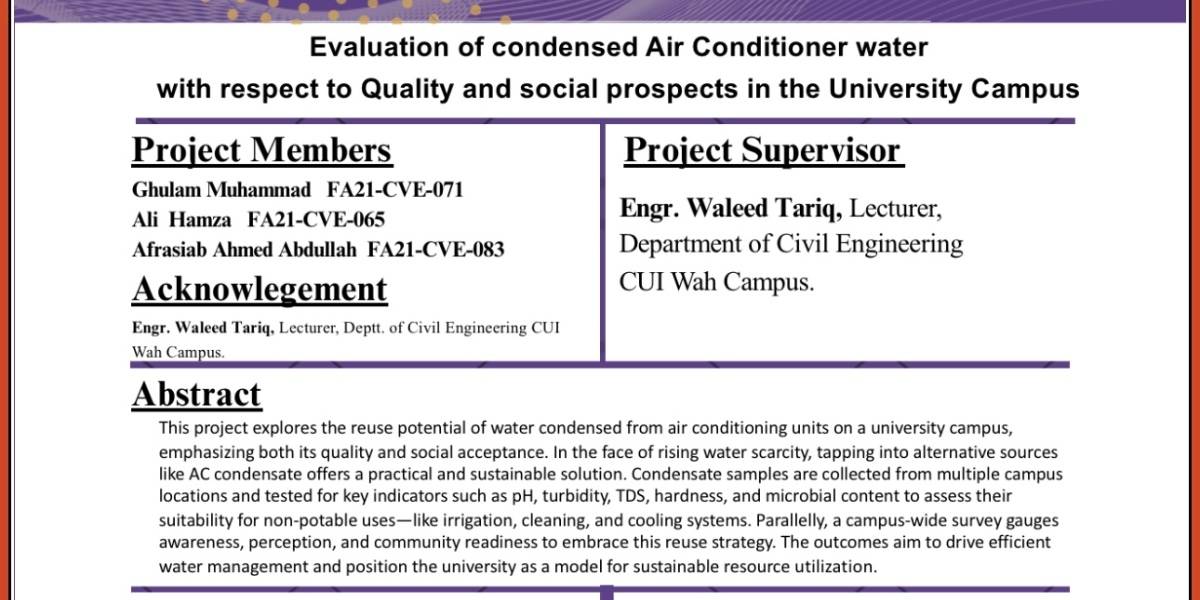Our project titled "Durability Assessment of Concrete Incorporating Recycled E-plastics & GNMPs (Graphite Nano Micro Platelets)" aims to evaluate the impact of recycled e-plastics and GNMPs on the durability of concrete. Initially, a comprehensive literature review identified research gaps in this area. In the next phase, four concrete mix designs were prepared with 0%, 0.1%, 0.3%, and 0.5% GNMPs and recycled e-plastics. ASTM standard concrete cylinders were cast and cured for 28 days. After curing, several tests were performed, including compressive strength, rapid chloride penetration, acid attack, water absorption, freeze-thaw resistance, and SEM analysis to assess the concrete's durability. This study provides insights into the sustainability and durability of concrete using recycled materials, contributing to more environmentally friendly construction practices.
Objectives
1.To Investigate the Effect of Recycled E-plastics and Graphene Nano Micro Platelets (GNMPs) on the Durability of Concrete
This objective focuses on analyzing how the incorporation of recycled e-plastics and GNMPs in concrete impacts its long-term performance. Specifically, it examines whether the addition of these materials can enhance concrete's resistance to degradation caused by environmental factors, such as acid attack, chloride penetration, and freeze-thaw cycles.
2.To Evaluate the Compressive Strength of Concrete Containing Recycled E-plastics and GNMPs at Different Mix Ratios
Aiming to measure the compressive strength of concrete with varying percentages of recycled e-plastics and GNMPs (0%, 0.1%, 0.3%, and 0.5%), this objective seeks to identify the optimal mix ratio for achieving both high strength and durability. The 28-day curing period will allow for a thorough assessment of concrete’s structural integrity under compression.
3.To Assess the Impact of Recycled E-plastics and GNMPs on Concrete’s Resistance to Rapid Chloride Penetration
By conducting a rapid chloride penetration test, this objective aims to determine how the inclusion of these additives influences the concrete’s ability to resist chloride ions, a significant factor in preventing reinforcement corrosion. The study will offer insights into the long-term serviceability of concrete in marine and other chloride-rich environments.
4.To Examine the Effect of Acid Attack on Concrete Mixtures Incorporating Recycled E-plastics and GNMPs
This objective investigates how the acid resistance of concrete changes with the inclusion of recycled e-plastics and GNMPs. The acid attack test will reveal whether these materials enhance or hinder the concrete’s durability in aggressive environments, such as wastewater treatment plants or industrial areas.
5.To Analyze the Microstructural Changes of Concrete with Recycled E-plastics and GNMPs Using Scanning Electron Microscopy (SEM)
Using SEM analysis, this objective will explore the microstructural effects of adding recycled e-plastics and GNMPs to concrete. It aims to understand how these materials interact with the concrete matrix at the microscopic level, providing valuable data for optimizing concrete mixtures for durability and strength in real-world applications.
Socio-Economic Benefit
Environmental Benefits:
This project reduces environmental pollution by recycling e-plastics, which are typically difficult to process and often end up in landfills. Incorporating recycled e-plastics and Graphite Nano Micro Platelets (GNMPs) into concrete helps address plastic waste while reducing the consumption of natural raw materials, promoting a circular economy. Additionally, GNMPs enhance concrete durability, decreasing the need for repairs and reducing long-term resource consumption, leading to more sustainable construction.
Economic Benefits:
The project offers cost savings by using recycled e-plastics and GNMPs, which are cheaper and more widely available than traditional materials. This makes concrete production more affordable, particularly in regions with limited access to raw materials. Furthermore, more durable concrete reduces maintenance and repair costs, leading to lower long-term infrastructure expenses. The use of recycled materials also stimulates new business opportunities in the recycling and construction sectors, supporting green technologies and sustainable practices.
Social Benefits:
The project promotes sustainable development by raising awareness of recycling and waste reduction. Its findings encourage the adoption of eco-friendly construction materials, contributing to global sustainability goals. Additionally, the enhanced durability of concrete can lead to more affordable, long-lasting infrastructure, improving the quality of life and resilience of communities.
Methodologies
1.Literature Review:
Conducted a comprehensive review to identify gaps in previous research on the use of recycled e-plastics and GNMPs in concrete.
2.Mix Design Preparation:
Prepared four different concrete mix designs with varying percentages of GNMPs and recycled e-plastics: 0%, 0.1%, 0.3%, and 0.5%.
3.Casting of Concrete Cylinders:
Casted ASTM standard concrete cylinders for each mix design.
4.Curing:
Cured the concrete cylinders for 28 days under controlled conditions.
4.Durability Testing:
Performed a series of tests to assess the durability of the concrete, including:
Compressive strength test
Rapid chloride penetration test
Acid attack test
Water absorption test
Freeze-thaw resistance test
SEM analysis of the microstructure
5.Analysis:
Evaluated the test results to understand the impact of recycled e-plastics and GNMPs on the mechanical properties and durability of concrete.
Outcome
The outcome of our project, "Durability Assessment of Concrete Incorporating Recycled E-plastics & GNMPs," provides valuable insights into the impact of recycled materials on the durability of concrete. After curing the concrete cylinders for 28 days, various durability tests, including compressive strength, rapid chloride penetration, acid attack, water absorption, freeze-thaw resistance, and SEM analysis, were performed on the concrete mixes with varying percentages of GNMPs and recycled e-plastics (0%, 0.1%, 0.3%, and 0.5%).
The results revealed that incorporating GNMPs and recycled e-plastics enhanced the concrete’s performance in certain tests, especially in terms of durability, compared to conventional concrete (0% GNMPs). Concrete mixes with 0.3% and 0.5% GNMPs exhibited improved resistance to chloride penetration and acid attack, along with reduced water absorption, indicating better durability against harsh environmental conditions. The SEM analysis showed improvements in the microstructure, suggesting enhanced bonding between particles and reduced porosity. However, the compressive strength results were mixed, showing slight reductions in strength at higher percentages of GNMPs.
Overall, the project demonstrated the potential of using recycled e-plastics and GNMPs to produce more durable and sustainable concrete, with the 0.3% GNMPs mix showing the most promising results for real-world applications.

